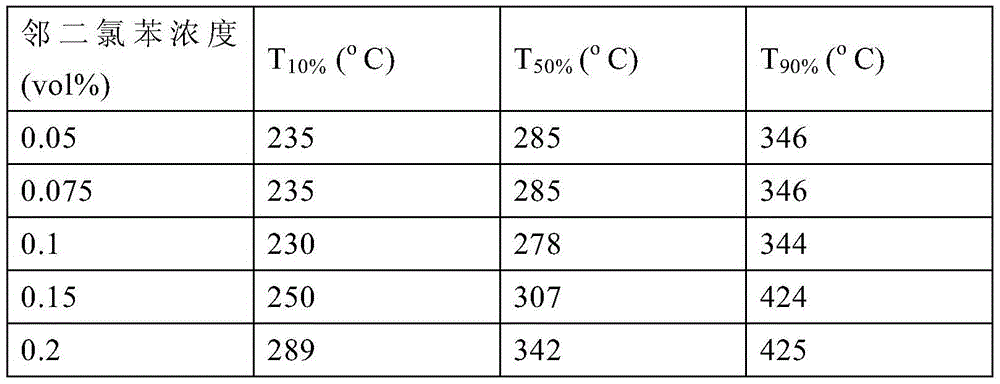Method and catalyst for low-temperature catalytic combustion elimination of polychlorinated aromatic hydrocarbons
A low-temperature catalysis, aromatic hydrocarbon technology, applied in combustion methods, physical/chemical process catalysts, chemical instruments and methods, etc., to achieve the effects of strong chlorine poisoning resistance, convenient and practical technical route, and long service life
- Summary
- Abstract
- Description
- Claims
- Application Information
AI Technical Summary
Problems solved by technology
Method used
Image
Examples
Embodiment 1
[0028] Dissolve commercially available 12.7g of sodium carbonate in 100ml of water to form a sodium carbonate solution as solution A; dissolve commercially available 7.3g of cobalt nitrate hexahydrate in 50ml of water to form a solution of cobalt nitrate as solution B; in an oil bath at 80°C , under the condition of stirring, add the A solution drop by drop to the B solution to form a precipitate, and let it stand in the air at room temperature for 12 hours; filter the filter cake, wash the filter cake to about PH=7, and dry it in an oven at 110°C for 12 hours. Take it out and grind it into powder, then move it to the muffle furnace for roasting. The calcination process is as follows: start heating at 50°C, program temperature increase at a heating rate of 1°C / min, raise the temperature to 500°C, and keep at 500°C for 4 hours to obtain pure tricobalt tetroxide catalyst.
Embodiment 2
[0030] Dissolve commercially available 12.72g of sodium carbonate in 100ml of water to form a sodium carbonate solution as solution A; dissolve commercially available 7.28g of cobalt nitrate hexahydrate in 50ml of water to form a cobalt nitrate solution, and then add 0.813g of 50% cobalt nitrate to the cobalt nitrate solution manganese nitrate solution to form a mixed solution of cobalt nitrate and manganese nitrate as solution B; in an oil bath at 80°C, under the condition of stirring, add solution A drop by drop to solution B to form a precipitate. Stand in the middle for 12 hours; filter to get the filter cake, wash the filter cake to about PH = 7, dry in an oven at 110°C for 12 hours, take it out and grind it into powder, then move it to a muffle furnace for roasting. The calcination process was the same as in Example 1 to obtain a manganese-doped tricobalt tetroxide catalyst with a molar ratio of cobalt to manganese of 11:1, which was designated as Co11Mn1 catalyst.
Embodiment 3
[0032] According to the method of Example 2, a cobalt-manganese composite oxide catalyst with a cobalt-manganese molar ratio of 9:1 was prepared, which was referred to as Co9Mn1 catalyst.
PUM
 Login to View More
Login to View More Abstract
Description
Claims
Application Information
 Login to View More
Login to View More - R&D
- Intellectual Property
- Life Sciences
- Materials
- Tech Scout
- Unparalleled Data Quality
- Higher Quality Content
- 60% Fewer Hallucinations
Browse by: Latest US Patents, China's latest patents, Technical Efficacy Thesaurus, Application Domain, Technology Topic, Popular Technical Reports.
© 2025 PatSnap. All rights reserved.Legal|Privacy policy|Modern Slavery Act Transparency Statement|Sitemap|About US| Contact US: help@patsnap.com



